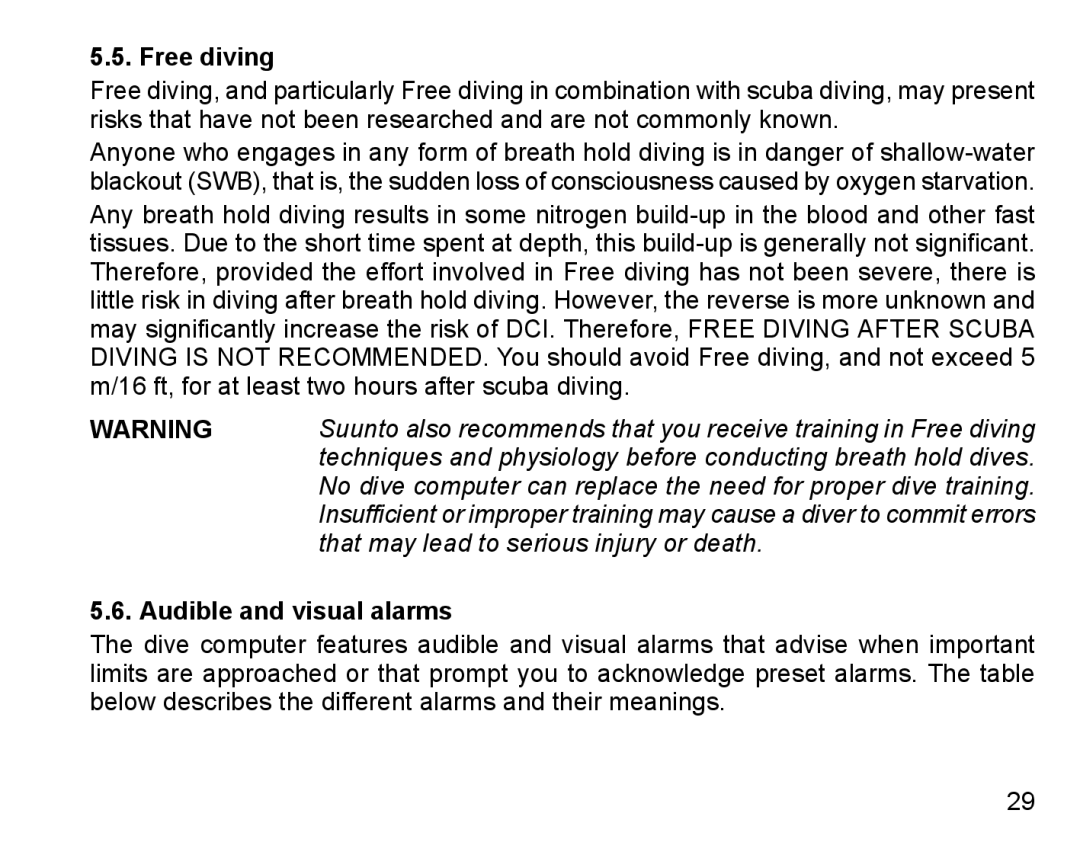5.5. Free diving
Free diving, and particularly Free diving in combination with scuba diving, may present risks that have not been researched and are not commonly known.
Anyone who engages in any form of breath hold diving is in danger of
WARNING | Suunto also recommends that you receive training in Free diving |
| techniques and physiology before conducting breath hold dives. |
| No dive computer can replace the need for proper dive training. |
| Insufficient or improper training may cause a diver to commit errors |
| that may lead to serious injury or death. |
5.6. Audible and visual alarms
The dive computer features audible and visual alarms that advise when important limits are approached or that prompt you to acknowledge preset alarms. The table below describes the different alarms and their meanings.
29
